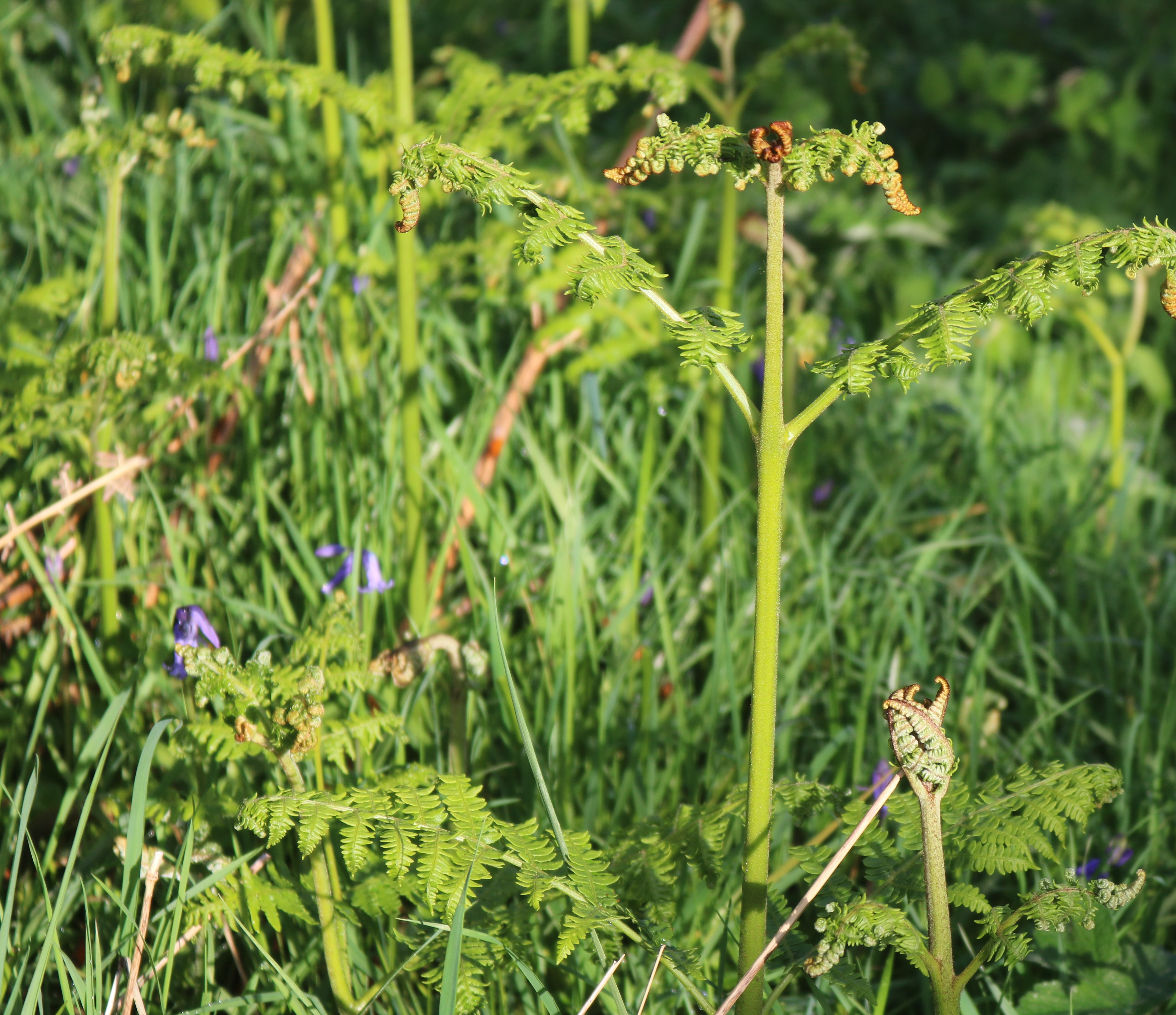Bleujennow Pennwydh
Penwith Flowers
We previously shared details of some of Penwith's flowers on our social media channels, so on this page we have pulled together all of our Penwith flowers to help you find them in our living, working landscape. Happy flower spotting!
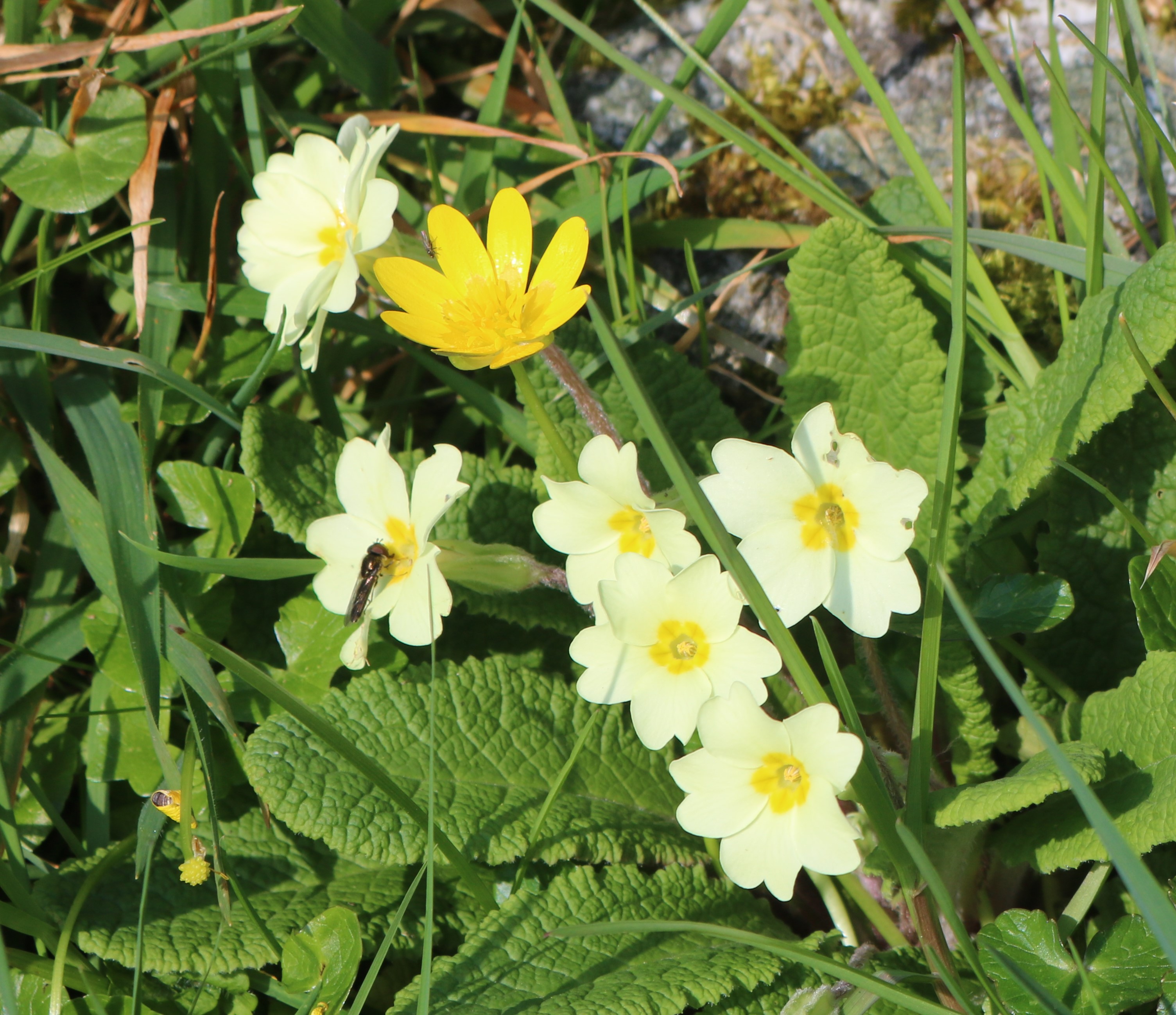 Primrose
Primrose
A sign that spring really is on the way, is the Primrose. This beautiful flower is quite common in Cornwall, but far less abundant than it used to be. The Scientific name is Primula vulgaris, which translates to the common first rose, a good name but not quite accurate any more. Shakespeare mentions it in The Winters Tale, ‘Pale Primroses that die unmarried’, as a reference to the fact that as it flowers so early, there aren’t many insects around to pollinate it. But if you look closely you can see our primrose is being visited by a fly, so it will be wed!
 Lesser Celandine
Lesser Celandine
The sharper eyed among you will have noticed that in our previous image of primroses was another, more yellow flower. This is Lesser Celandine (Ficaria verna), a member of the buttercup family. It is one of the first flowers out in Penwith, abundant in early spring almost everywhere. To tell it apart from other buttercups, have a look at the more slender petals, and heart shaped leaves. These little hearts can help you remember its name as it is everywhere on Valentine’s Day, and valentine sounds like celandine (a bit!).
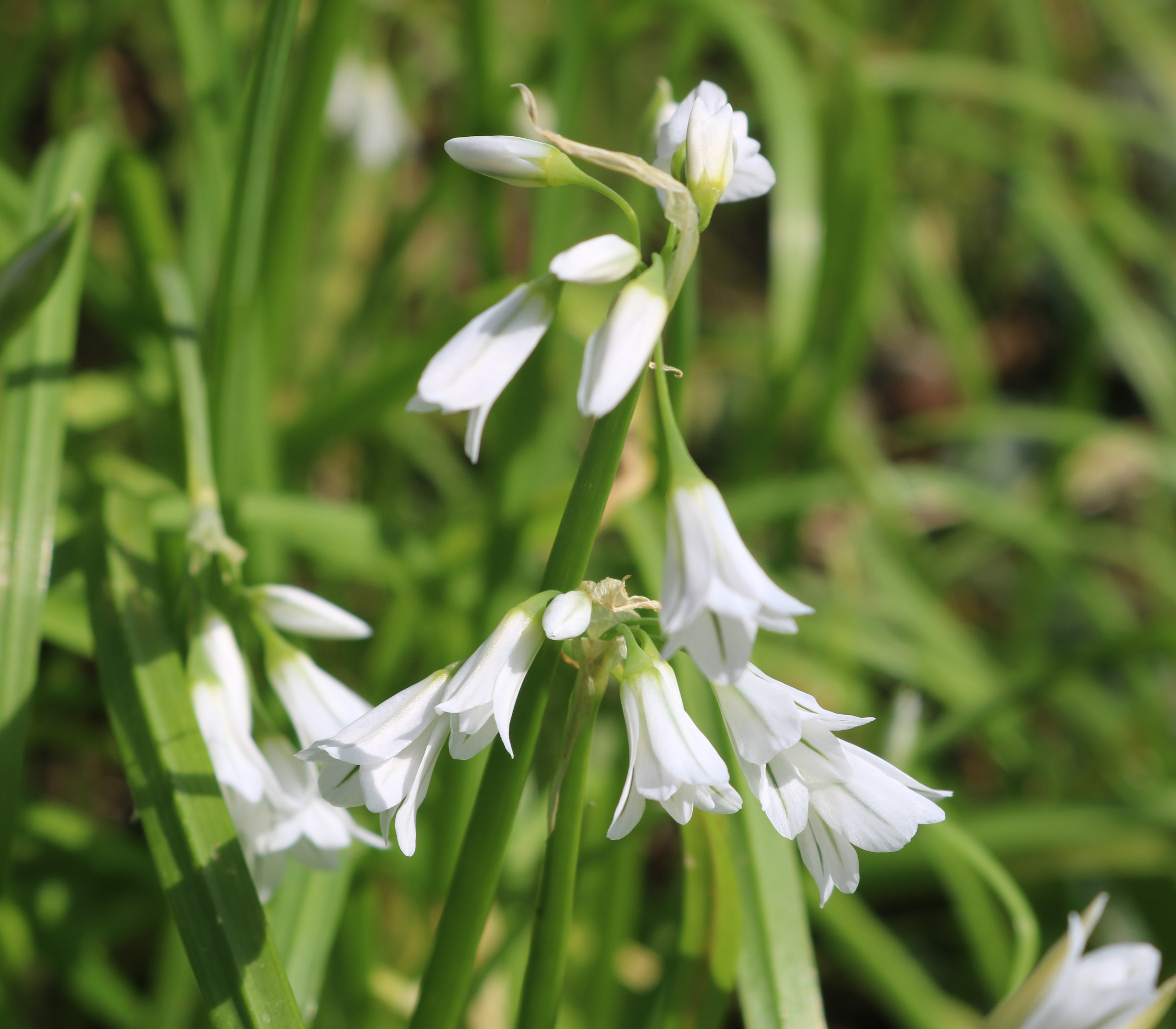 Three-cornered Leek
Three-cornered Leek
The Three-cornered Leek is abundant in the hedges and lanes of Penwith in springtime. It is so called because of it’s triangular stem. It is a member of the onion family as reflected by its Latin name Allium triquetrum which means 'the onion with three sides'! It is an introduced species and can be a little invasive. It’s edible with a delicious garlic flavour, lovely in salads, while the flowers having a sweet nutty flavour.
 Blackthorn
Blackthorn
In folklore, Blackthorn (Prunus spinosa) has a negative reputation as it linked to cursing in witchcraft - the wood was used for blasting rods and the thorns used in curse poppets. However, as Blackthorn has the largest thorns of any plant in the UK, they have also been used in sewing needles. Interestingly the flowers of Blackthorn come out before the leaves, the other way round from Hawthorn (Creteagus monogyna). The flowers then go on to develop into sloe berries, very bitter but delicious in sloe gin!
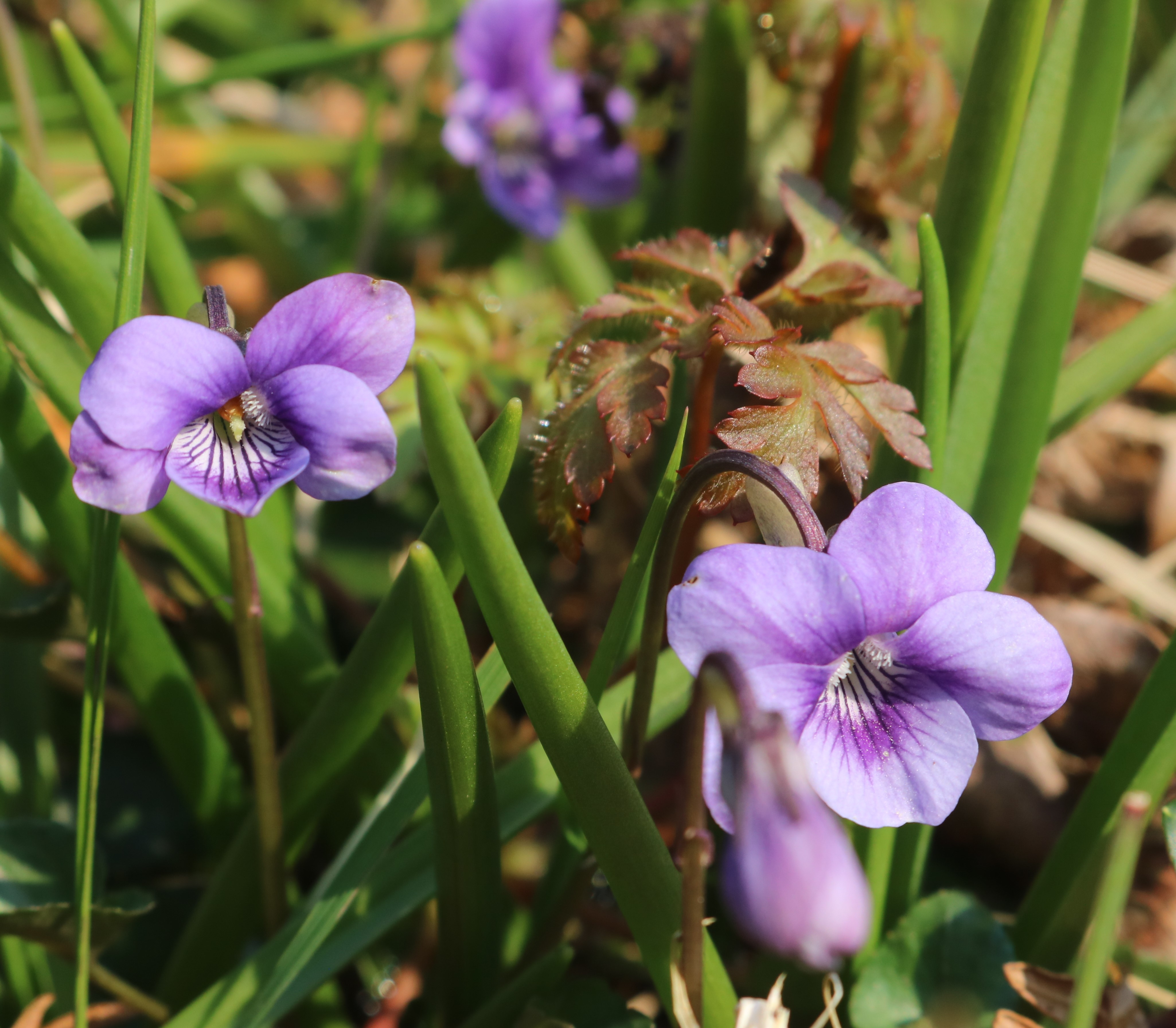 Common Dog-violet
Common Dog-violet
The Common Dog-violet (Viola riviniana) is a beautiful delicate purple flower that shows its face on the hedges, banks and moors of Penwith in springtime. ‘Dog’ is a derogatory term, referring to the fact that the Common Dog Violet has no scent, unlike the Sweet Violet (Viola odorata). However it is a hugely important flower, being the food plant for the caterpillars of several of our rarest butterflies in the UK, including the Pearl-bordered Fritillary and High Brown Fritillary. It’s also important as a nectar source for adult butterflies.
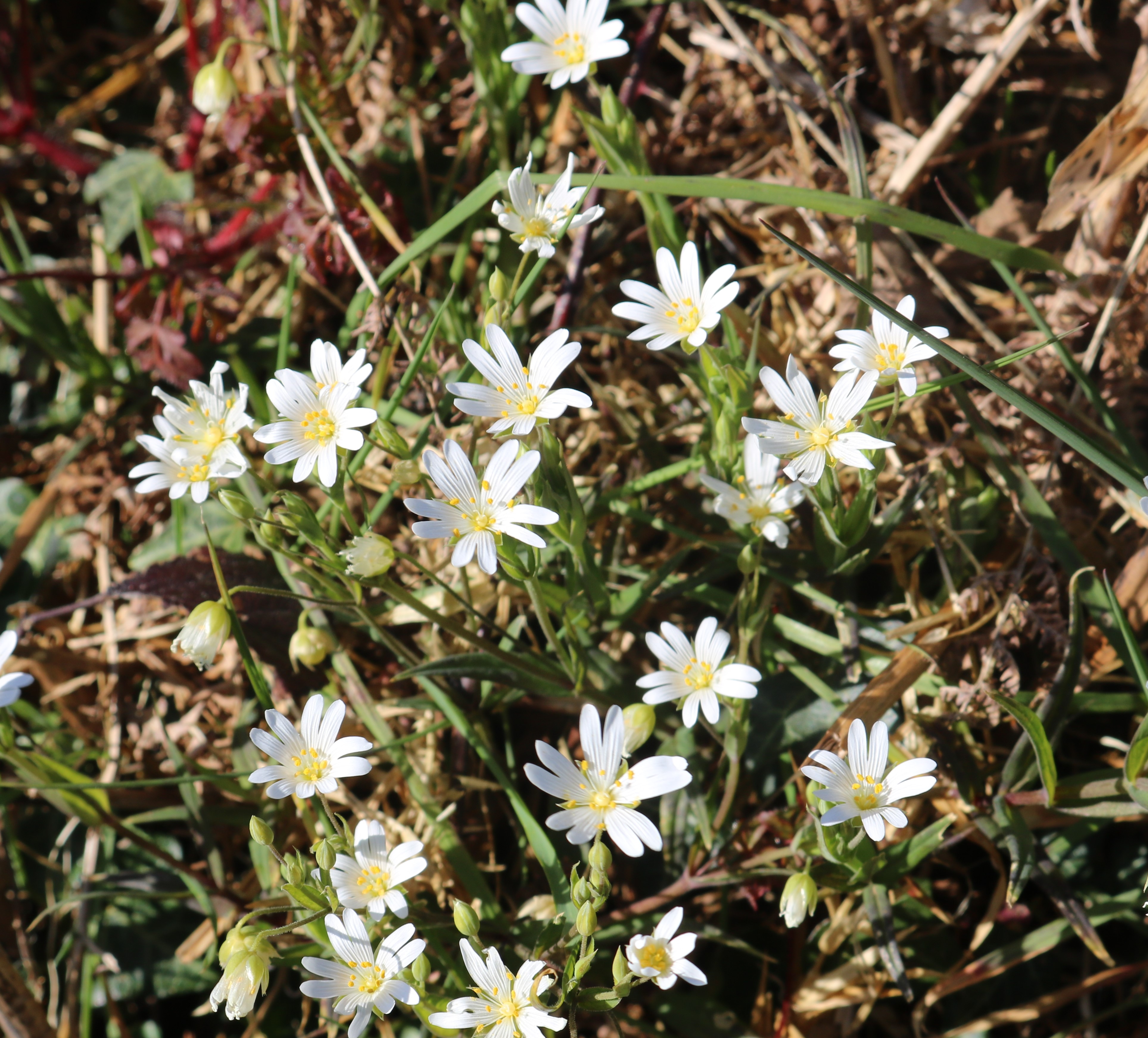 Greater Stitchwort
Greater Stitchwort
This lovely flower is Greater Stitchwort (Stellaria holostea). Through April its beautiful delicate white petals and slender leaves appear in our lanes and hedges. The name apparently refers to the use of the plant as a remedy to ease stitches and pains in the side. The Latin name refers to another past herbal medical use, holostea meaning to make bones whole again!
 Grey Willow (Pussy Willow)
Grey Willow (Pussy Willow)
Grey Willow (Salix cinerea) or Pussy Willow as it is often called at this time of year, bursts into flower in our Cornish countryside in spring. It is a small gnarly tree, loving the dampest areas. Grey Willow is dioecious, meaning male and female flowers grow on separate trees. The male catkins are grey and oval in shape, becoming yellow when ripe with pollen. The female catkins are longer and green.
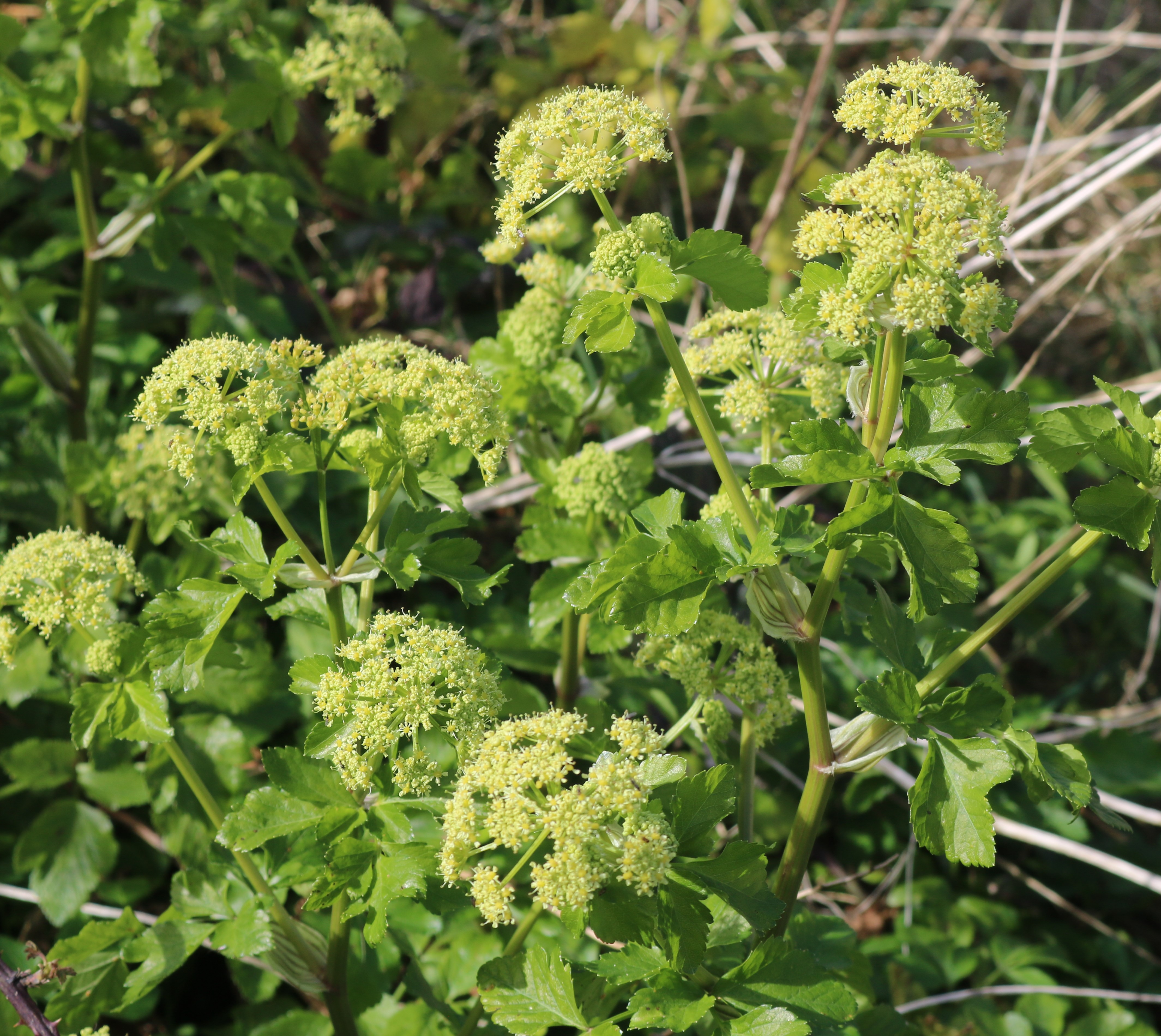 Alexanders
Alexanders
In April the hedges and cliffs of West Cornwall come alive with the striking yellow green flowers of Alexanders (Smyrnium olusatrum). This plant is Roman introduction, brought in because the whole plant is edible and can be prepared in many ways. The common name refers to Alexander the Great, from Macedonia. In the 17th Century the seeds were sold by herbalists as Macedonian Parsley seeds, and apparently can be used like black pepper!
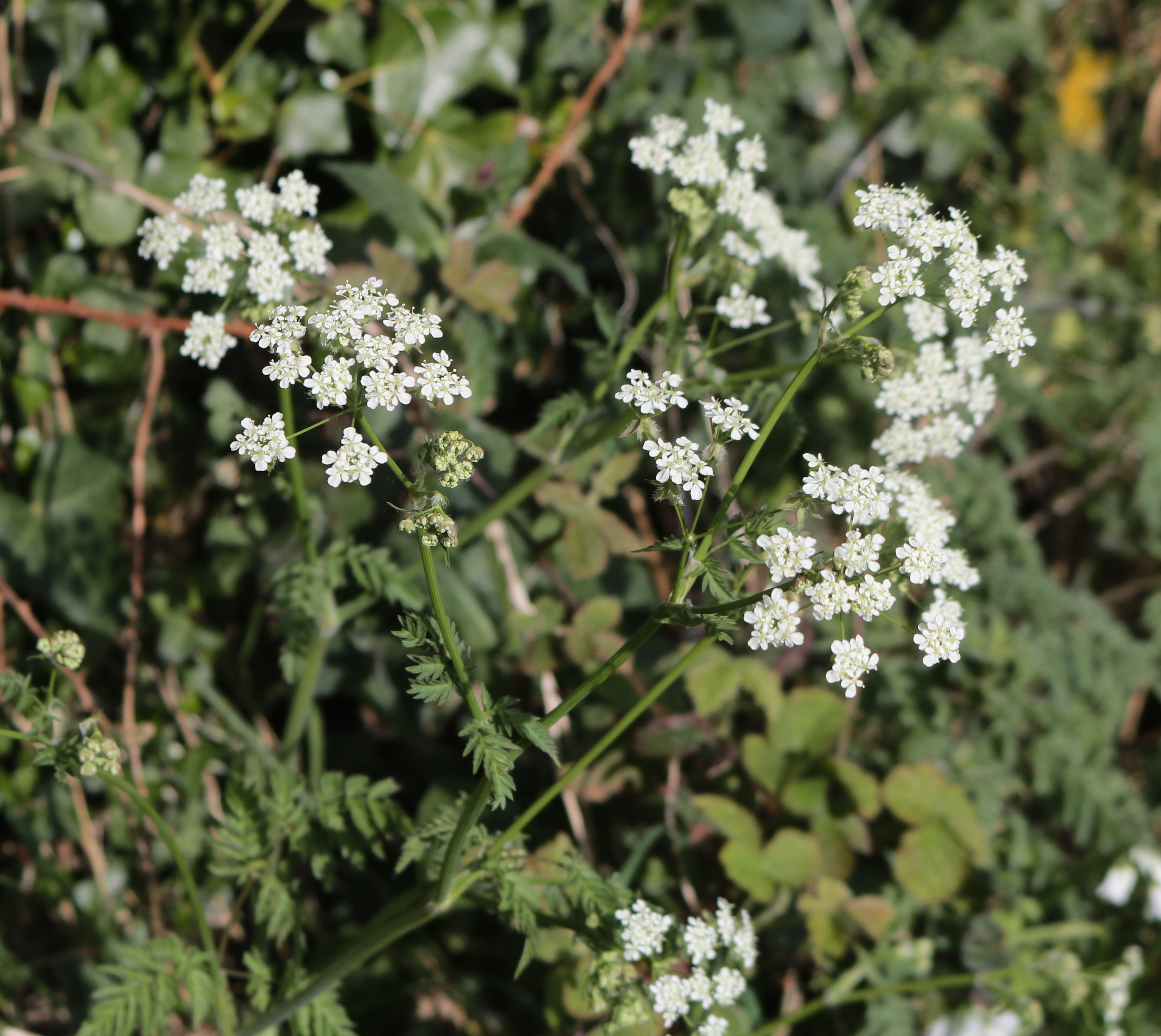 Cow Parsley
Cow Parsley
In April, all along the hedges and lanes of Penwith, sprays of Cow Parsley (Anthriscus sylvestris) are shooting up, telling us that spring is really here. This delicately petalled tall white flower has a folk name of Queen Anne’s Lace, and contrasts beautifully with the blue of Bluebells (Hyacinthoides non-scripta) and the pinks and reds of Red Campion (Silene dioica) and Sorrel (Rumex acetosa), all through late April and May. And then it disappears as suddenly as it comes, and summer begins!
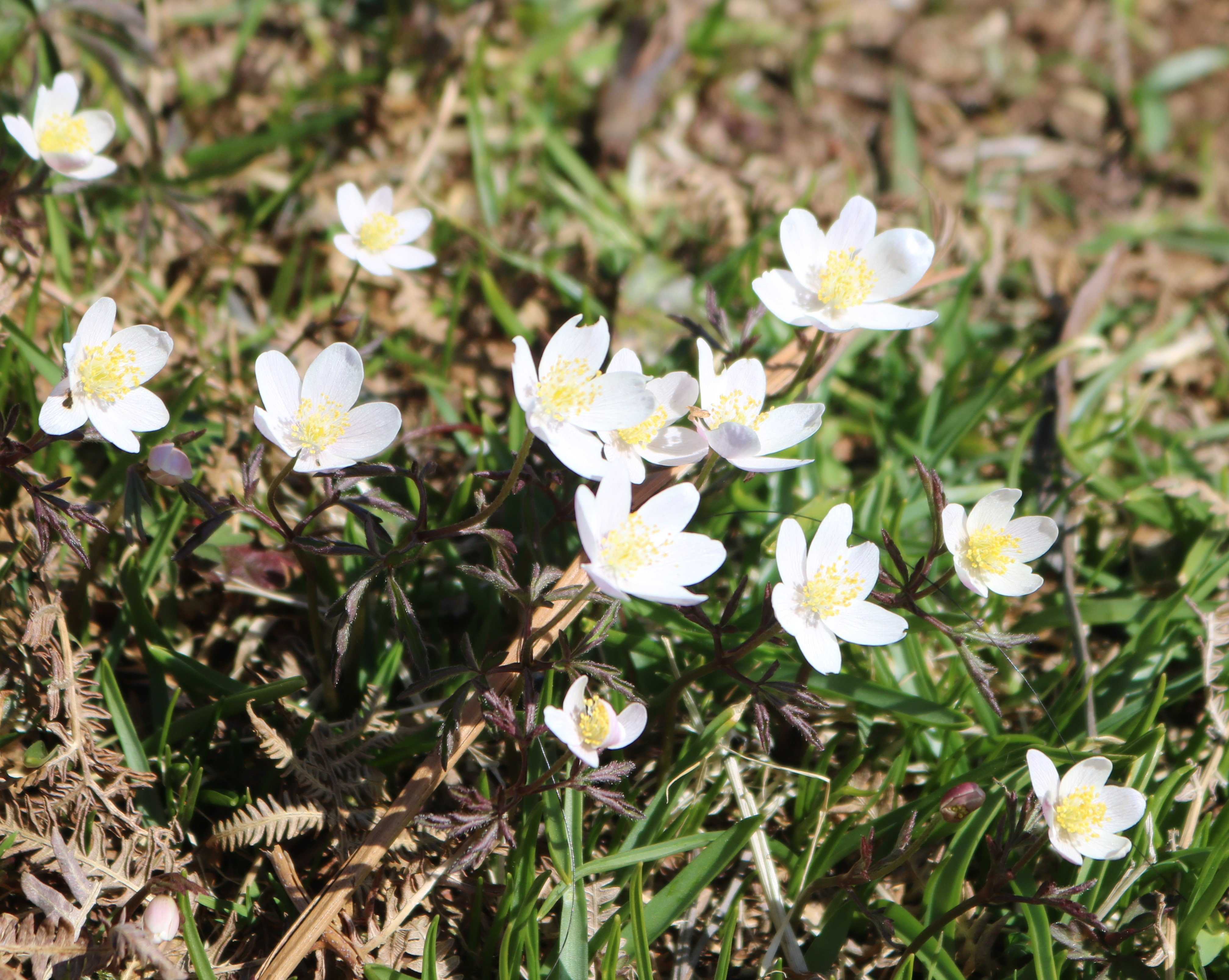 Wood Anemone
Wood Anemone
This pretty white flower, sometimes tinged with pink, is Wood Anemone (Anemone nemorosa), one of the first flowers to appear in woodland in spring. It appears early, to take advantage of the spring sun before trees in the woodland canopy cast their shade. It is considered to be an indicator of ancient woodland. Here in Penwith is often found on the heaths and moors, which show that these habitats at some time in their past were woodland. In many areas of Penwith Bracken (Pteridium aquilinum) now acts as the canopy, shading out the later competition for these early woodland flowers.
 Apple
Apple
In later spring many of our fruit trees come into flower, including apple trees, in the UK we have a native apple – the Crab Apple (Malus sylvestris), but also in the countryside many naturalised cultivated apples (Malus domestica) known as ‘Wildings’. Distinguishing between the two can be quite tricky, especially as they hybridise. The Crab Apple tends to have smaller leaves, and sometimes thorns. The easiest way to tell them apart is to wait until Autumn and compare the fruit, the Crab Apple’s fruit is small and yellowish green, the domestic apple much larger and a whole range of colours!
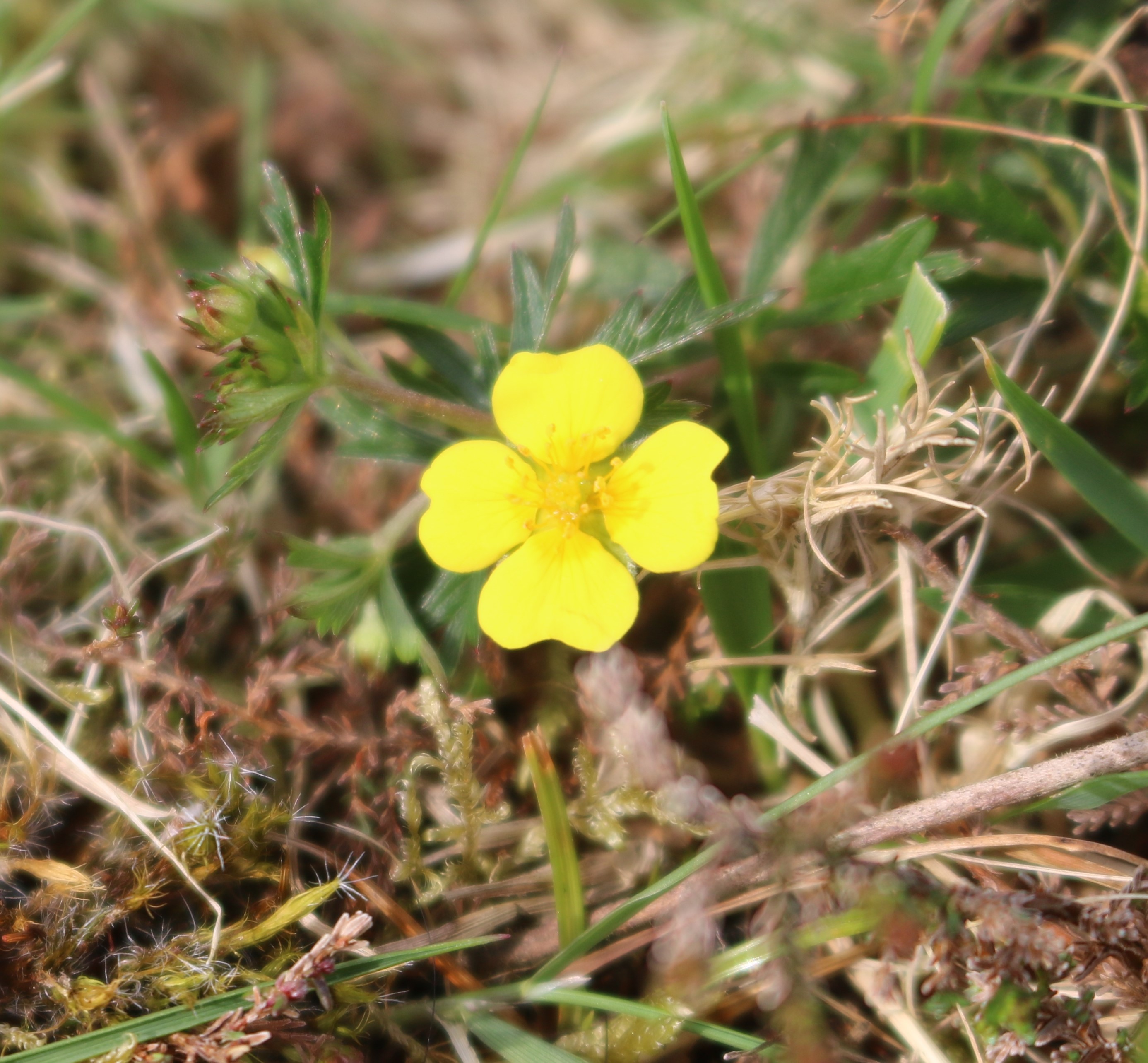 Tormentil
Tormentil
This low-growing four-petalled yellow flower is characteristic of acidic soils such as the Penwith moors. It is a good nectar source for insects such as solitary bees. In the past the root has been ground up to a powder and used for toothache and ulcers, and also used as a red dye for colouring clothing. The name Tormentil (the Latin name is is Potentilla erecta) refers to stomach pains which the plant also supposed to be able to help!
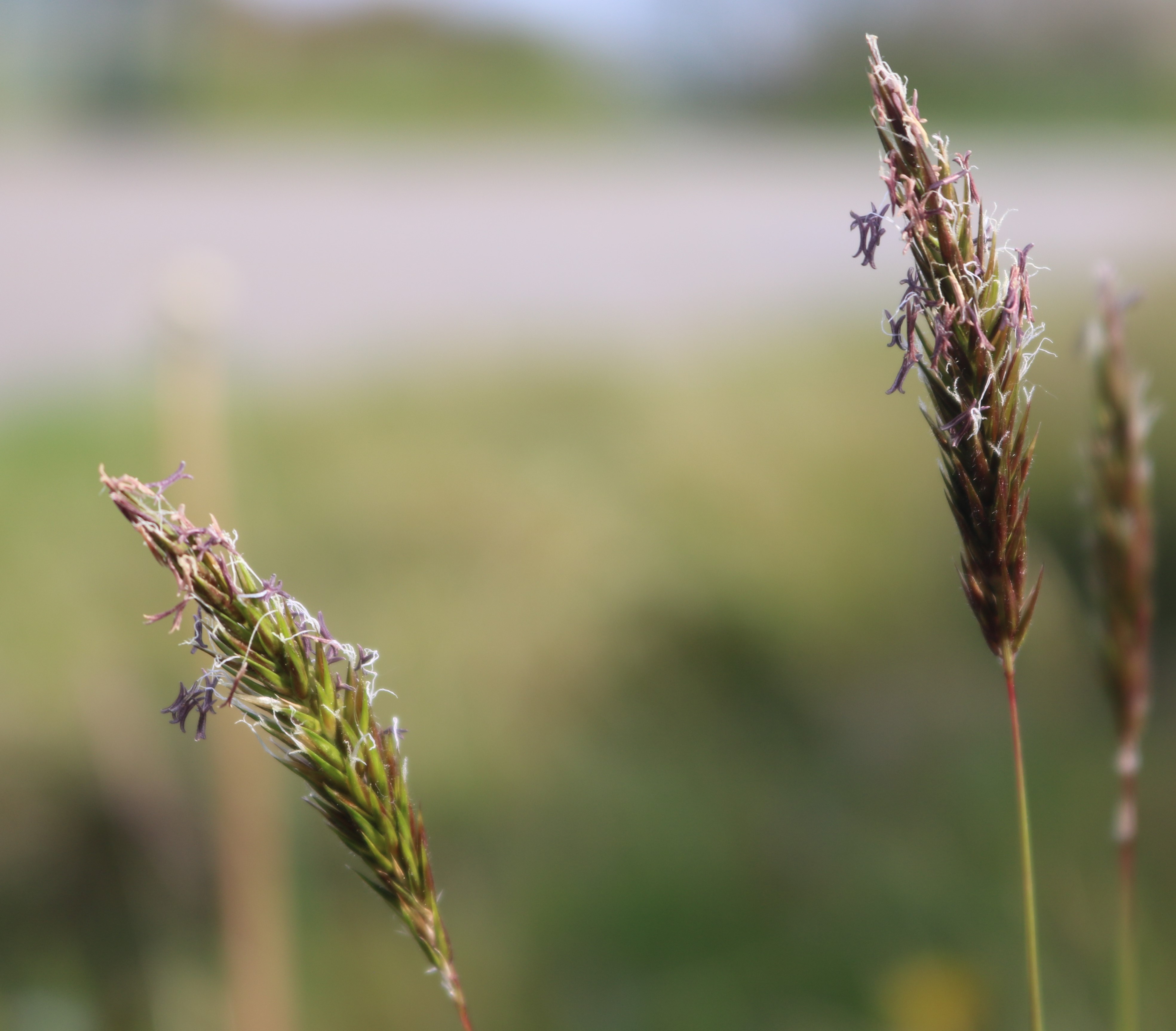 Sweet Vernal Grass
Sweet Vernal Grass
Grasses are flowering plants, but they are pollinated by wind rather than insects, and as such don’t need to have bright petals. Instead, they have flowers designed to disperse their light pollen onto the wind. Sweet Vernal Grass (Anthoxanthum odoratum) is one of the first to flower, with vernal in the name referring to spring-time. The ‘sweet’ part of the name hints at the plant’s unusual quality of tasting like the smell of freshly cut meadows; in the same way that Parma Violets taste of the smell of violets!
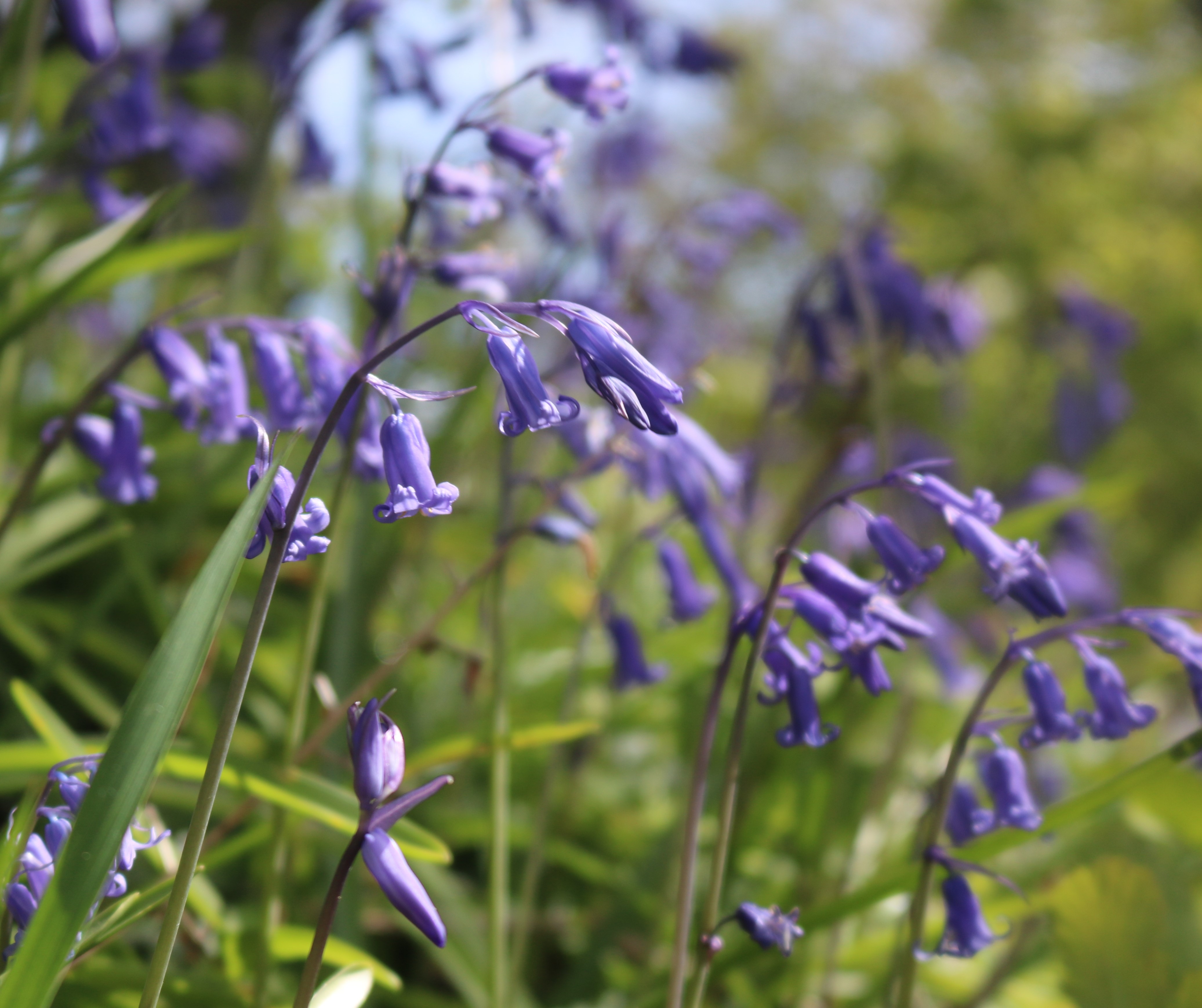 Bluebell
Bluebell
Bluebell (Hyacinthoides non-scripta) was voted the nation's favourite flower in a poll conducted by Plantlife (beating Primrose (Primula vulgaris) into second, and Poppy (Papaver rhoeas) into third). This is fortunate as Britain is the home to half the world's population of Bluebells. The deep blue flowers put on a fabulous show in woods in spring, and also across the moors of Penwith, where bracken provides the deep shade needed in later months to keep the conditions bluebells need.
The sap from the bulbs has been used as a glue for the feathers of arrows in medieval times, and to stiffen the ruffs of Elizabethans!
Bracken
Although not a flowering plant, rather a fern, we've included Bracken (Pteridium aquilinum) in our Penwith flowers because all over the moors of Penwith the delicate fronds of Bracken can be seen unfurling. It is easy to distinguish from other ferns by being the only one to have fronds (the leaf equivalent) growing out from a central stem in opposite pairs. Other Ferns have all their fronds coming from the bottom (known as a basal rosette).
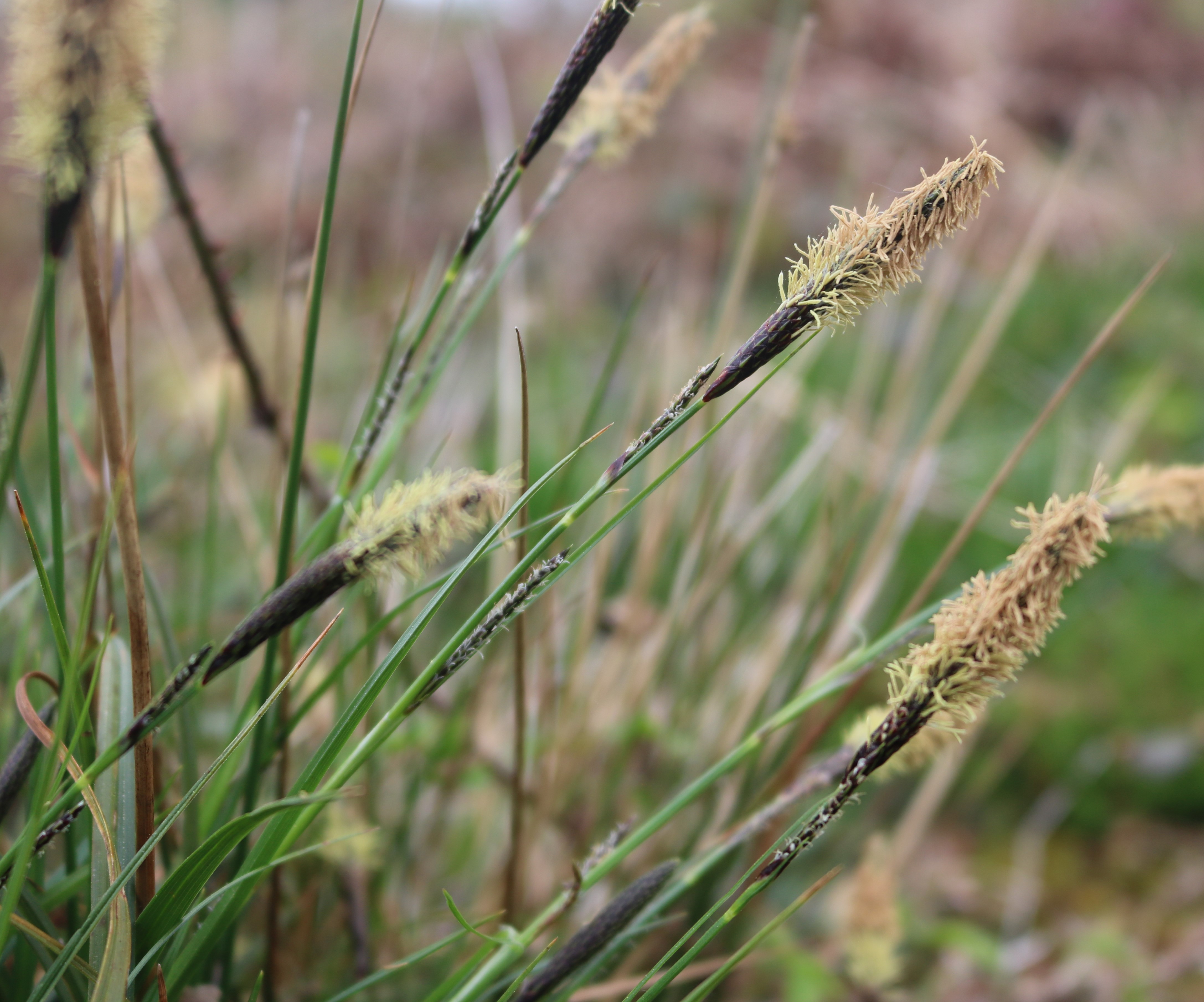 Common Sedge
Common Sedge
Common sedge (Carex nigra) is a frequently encountered plant over the Penwith Downs and Moors. It is recognisable by its black cigar-shaped flowers which become creamy pale yellow as they release pollen. Sedges are in a group of plants, (with grasses and rushes) that are wind-pollinated. They can be recognised by the triangular cross-section of the stem, which means when the stem is rolled between the fingers, sedges have edges!
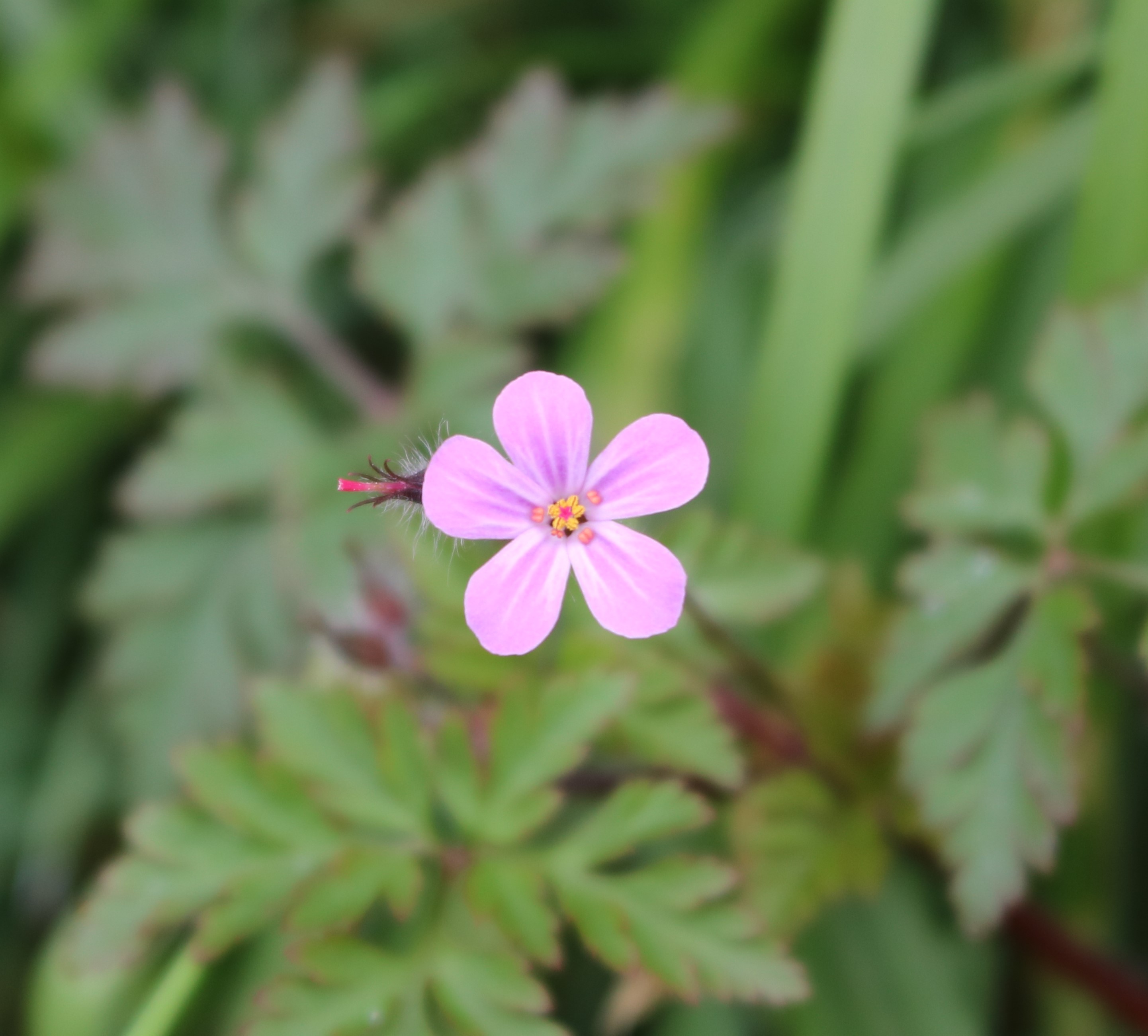 Herb Robert
Herb Robert
Herb Robert (Geranium robertanium) is a member the geranium family, and is noticeable for its pretty pink flowers, and also its delicate divided leaves (tri-pinnate in botanical terms), which are often red. In medieval times these red leaves were thought to indicate that the plant was of benefit to blood disorders and the leaves were also often used to staunch blood flow! The name Robert may have come from the Latin ruber, meaning red.
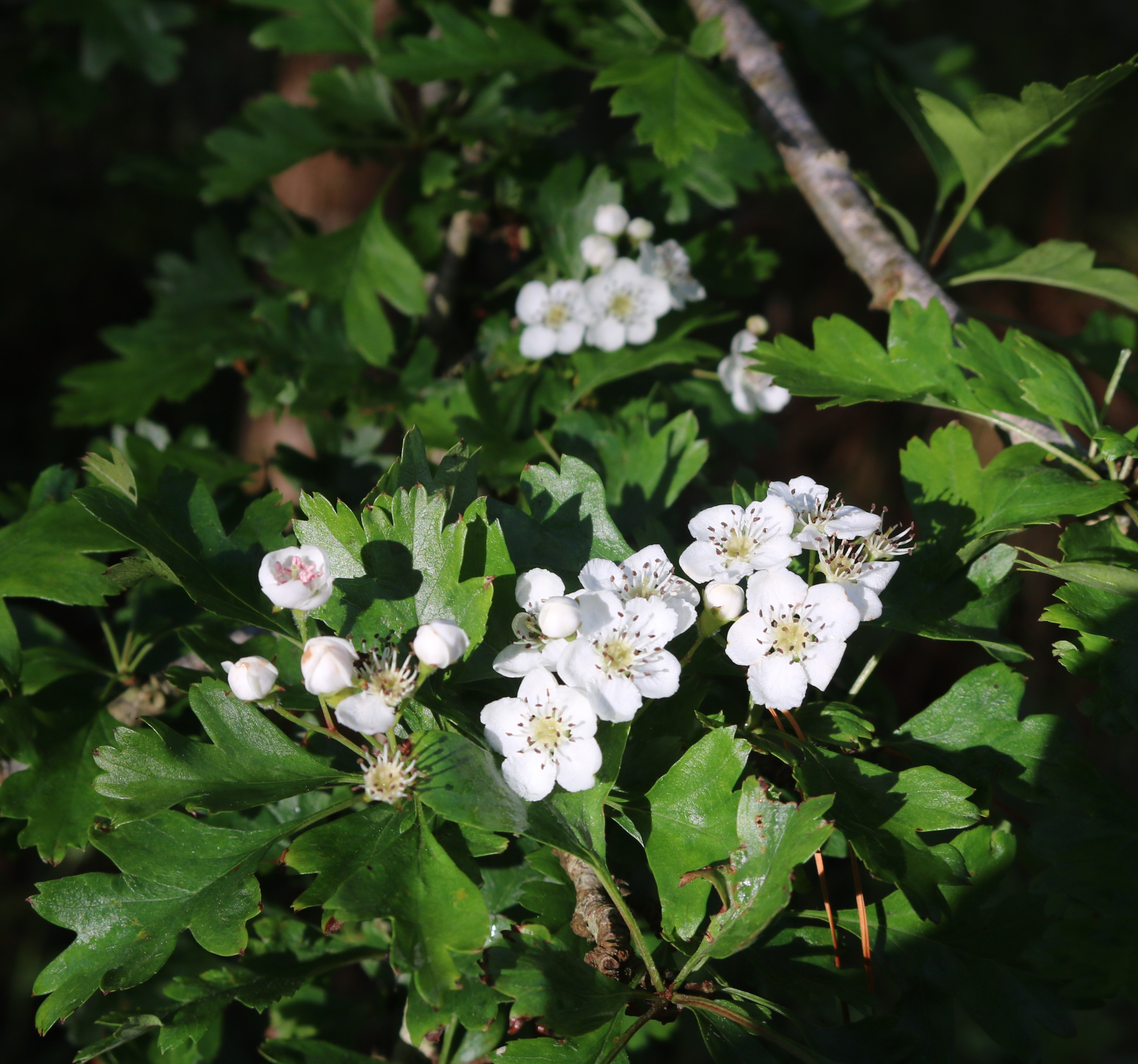 Hawthorn
Hawthorn
Hawthorn (Crataegus monogyna) is a common roadside and hedge shrub bursting into flower in May, hence its other common name. In the past it was often planted to mark the boundaries of land, probably because of its thorniness. In the pagan calendar it signals the approach of summer, with its blossoms often teeming with insects. The fruits, known as haws, are an important food source for birds in winter.
 Red Campion
Red Campion
Red Campion (Silene dioica) can nearly always be found flowering somewhere, all year round. But in May it is at its best, a beautiful contrast to the blue of Bluebells (Hyacinthoides non-scripta), and white of cow parsley (Anthriscus sylvestris), along the lanes of Penwith. The Scientific name Silene refers to the merry, drunken woodland god of Greek mythology, Silenus, whist dioica refers to the fact that the plant is dioecious, having male and female flowers on separate plants.
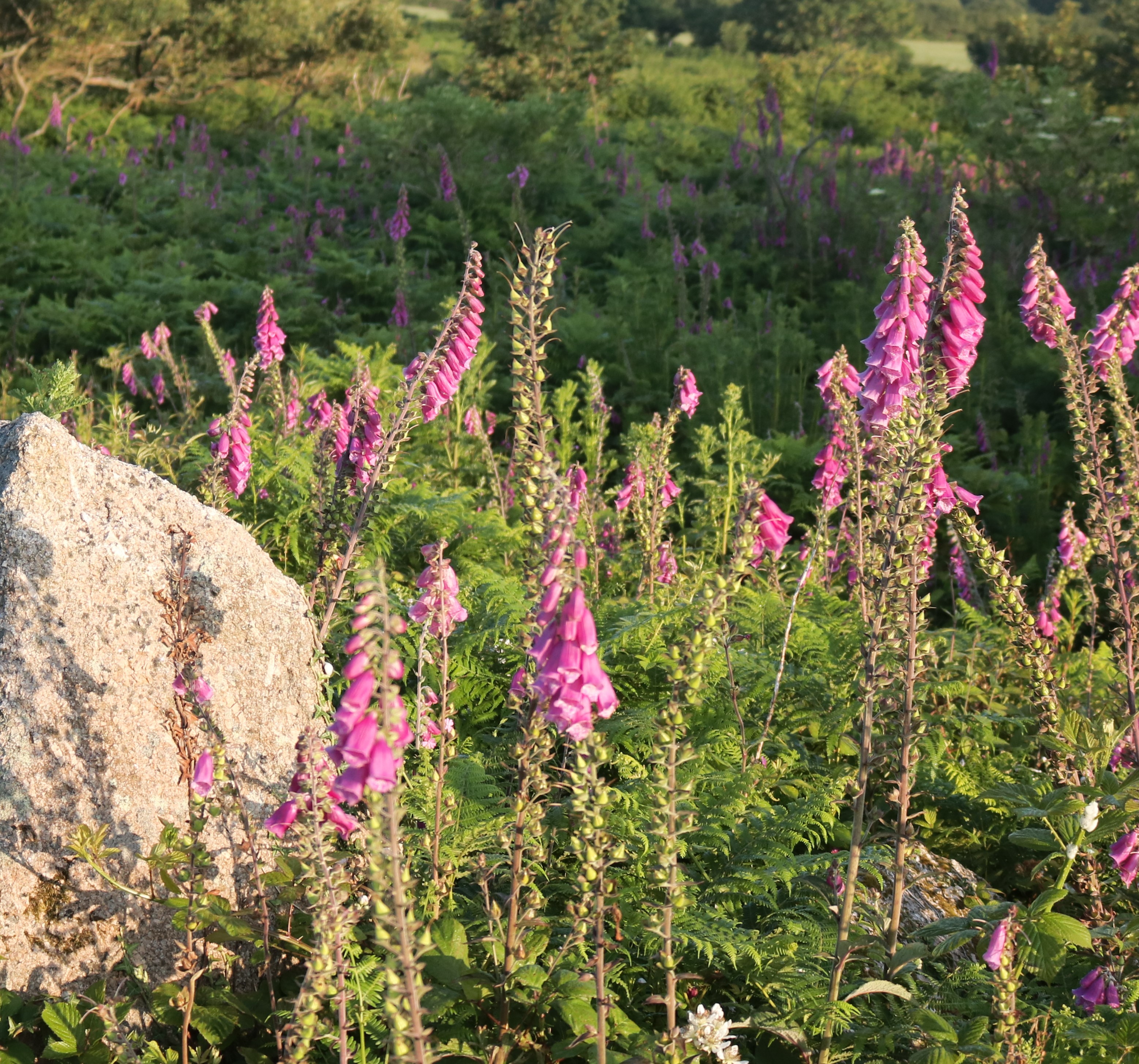 Foxglove
Foxglove
In June, all over the moors and hedges of Penwith, the purple spikes of Foxglove (Digitalis purpurea) pop up out of the surrounding vegetation, signifying that summer is really here. The common name probably didn’t come from the snug fit of one of the flowers onto a fox’s paw, more likely it is a corruption of ‘folks’ meaning the little people or fairies, and the Anglo Saxon ‘gliew’ meaning bell. So, the name came from ‘fairy bells’ which is how the plant is known in some parts of the country. It is a poisonous plant, and is can be used in the production of a heart drug digitalis.
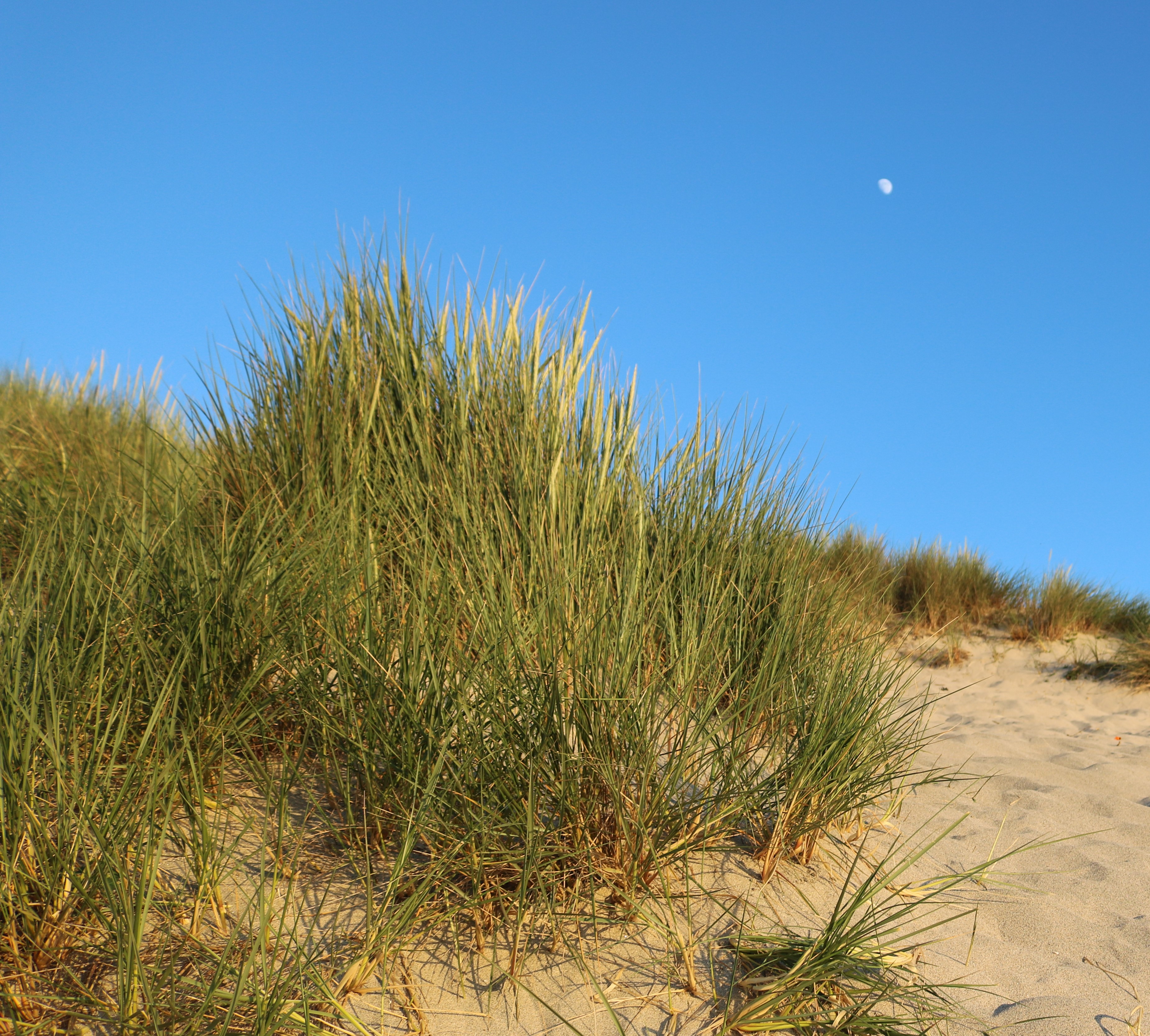 Marram Grass
Marram Grass
If you are venturing down to the beaches of Penwith, you may well pass through sand dunes. These are formed by some very specialised and distinctive plants that are able to grow in sand, such as Marram Grass (Ammophilla arenaria). It can be recognised by its tufty, spiky growth and – in summer – its golden flower-heads. Marram Grass is able to survive by having very long roots that can seek out water, and very thin waxy leaves which it is able to roll up to prevent loss of water. Once it has stabilised the sand, other plants are able to move into the dunes, forming the distinctive dune habitat.
 Red Valerian
Red Valerian
Red Valerian (Centranthus ruber) is a recent introduction to the UK. It was originally brought in from the Mediterranean in the 16 century, but escaped from gardens to become naturalised. The common name is slightly confusing as the flowers are found in three colours, and the deep red form is not the most common. The petals are often white, or most commonly a pinkish magenta shade. It produces abundant nectar and is a particular favourite of insects with a long proboscis, such as butterflies and moths.

